Judith Adam is a regular contributor to the pages of Garden Making magazine and a great gardener, too. Best of all, Judith isn’t shy about sharing her knowledge and opinions about plants and gardens. Judith will be writing once a week, sharing experiences from her own garden, telling us what she’s discovered in her research, and offering solid, practical advice. As always, your comments are welcome—we like to know what’s going on in your gardens, too!
It has been as hot as…
Sept. 5, 2010 — Hello, and welcome to my blog. People learn about gardening in different ways — from family tomato-growing traditions, from sharing plants with friends, and from watching how things grow in the neighbour’s garden. Well, on my side of the fence, my Zone 6 Ontario garden has been hot as Hades.
The Big Heat arrived in mid-May and lasted all summer. Really, there was no cold day in August, and none in June or July, either. Lots of humidity to go along with the swelter.
Unrelenting heat and humidity make me feel stressed out, and have the same effect on plants — and they’re out in it all the time, with roots in heated soil and foliage transpiring water 12 hours a day. It’s starting to cool down now and the nights are refreshing, but the garden already looks like toast.
Restorative tonic (for the plants, too)
A season of extended high temperatures sets the stage for winter dieback of roots and twigs, and that’s something I’d like to prevent. Along with keeping up the irrigation as needed, I’ll dose plants with a restorative tonic. Not enough nutrients to spur new growth, but a snack rich in minor elements.
There are lots of tonic recipes around, and for autumn I apply a mixture of 1 tablespoon (15 mL) each of kelp liquid concentrate (from a garden centre or mail order) and unsulfured blackstrap molasses (from my kitchen) in a gallon (4 L) of water. The kelp provides trace nutrients essential to disease resistance, and the molasses is a carbohydrate sugar to feed soil microbes, speeding up the decay of organic materials into nutrients for plant roots. Unsulfured blackstrap molasses is a rich food source, containing calcium, magnesium, iron and potassium, all essential to plant health. (Sulfured molasses has sulfur dioxide added as a preservative.)
I drench the roots of anything that looks beleaguered, including houseplants. And by the way, a Texas farmer says (on the Internet) it keeps feral pigs out of his corn patch! Could be true…
Dept. of this and that
• The best annual plants in my garden through the summer heat were coleus—‘Millenium Red’ in the ground, and ‘Creamy Pineapple’ in containers. ‘Dragon Wings’ begonias are still going strong and look good; but ‘Nonstop’ tuberous begonias couldn’t stand up to the hot, sticky weather.
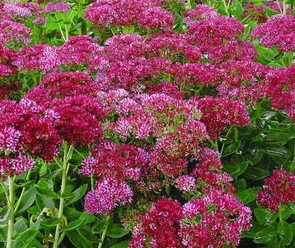
• My best new perennial is Sedum spectabile ‘Autumn Fire’ (Zone 4, 24 x 18 inches/ 60 x 45 cm), an improved form of the old reliable ‘Autumn Beauty’.
It stands taller and stiffer, doesn’t flop over or splay out, and is a more vibrant red-burgundy colour. It’s going to be bright and bold until the end of October, and then— thanks to those stiff stems— it will stand up nicely in snow all winter.
• Seen in the perennial gardens in front of the Festival Theatre at Stratford, Ont., this summer: Phlox arborescens ‘Blue Paradise’, with clear blue buds opening to lavender-blue petals, gracefully fading to violet, definitely worth looking for in nurseries next season.
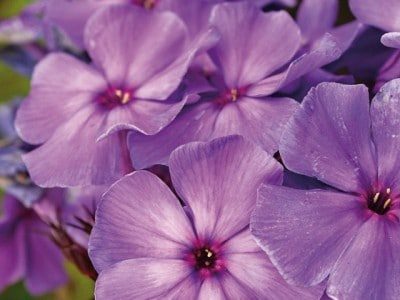
I’m a big fan of phlox; it gives such a gorgeous display for six to eight weeks, is great value for the space it requires, has a pleasant scent and is good for cutting, too.
• The Bug Man Award goes to Garden Making publisher Michael Fox. He devoted his summer holiday to drowning Japanese beetles, and certainly made a dent in the teaming population of iridescent rose munchers. We can’t say he eradicated the problem, but no man ever tried harder. See his remarks on this here.
That’s all for now, but I’ll be back soon. —Judith Adam


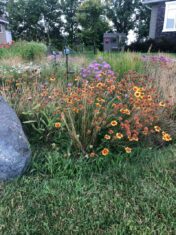



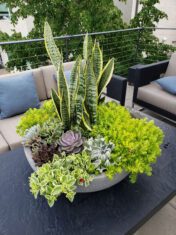
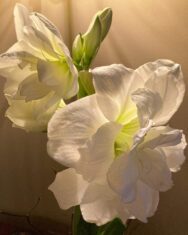

Hi Judith – love your columns on the website. Have a question – quite some time ago, you did an article on Dahlia Berliner-Kleene. It was perfect for my container design. I ordered and received it from Veseys, BUT it is nothing like the photo in your article. The one I received does not have a bright pink centre. Is it possible that your photo is incorrect? If so, do you know the correct name of the dahlia in the article?
Regards, Jean Clark
Hello Jean,
The Oct 26, 2011, blog post by Judith about how to store dahlias was accompanied by a photo of a dahlia grown by one of our staff. The tuber she bought was labelled ‘Berliner-Kleene.’ However, sometimes weather can affect the colour of dahlias, and unfortunately sometimes tubers can be misidentified. Perhaps that was the case with the one in the photo. Beckie Fox
To Flower Observer, Sept. 9
I don’t know if there are any actual secrets to growing sunflowers… But I’ve noticed that at season’s end, they tend to stand straighter when grown as a group. Single sunflowers develop a lean to one side (or even topple over), depending on how heavy the head is. So keep them in communities for best results.
To Aldona Satterthwaite, Sept. 8
Well, I can certainly recommend the molasses for whatever ails you – but hold off on the kelp if you plan to drink it yourself! Thanks for your supportive message from the Executive Director’s office at the Toronto Botanical Gardens. Much appreciated!
What a lovely old fashioned idea … My grandparents had their restorative tonic every evening and it did them the world of good! My new 'aha' plant this year was Portulaca, I used them in several planters in full sun and they exploded over the edges to a width of 2 1/2 feet wide! And I never realized their flowers almost look like a rose so I have my Mother in law to thank for suggesting I try them! I'm going for Phlox next year!
Michael must have made a dent in the JB population because I had fewer this year ! wink wink .. I love the sedums of Autumn and especially NEON caught my eye with that hot pink colour .. how can anyone not have some in their garden ? Fall tonic .. sounds good to me .. except .. I keep eating the molasses before I can get it in the tonic ! oops !
Joy
PS I am a phlox virgin still .. I don't know why but they scare me !
Excellent start. Anticipating more thoughtful blogs.
Any insights on growing sunflowers?
Hello Judith
Thanks for sharing your fall tonic, one I've not come across before but will certainly try.
I have several phloxes and love their colour; 'Blue Paradise' will be on my wish list for next year.
Thanks Judith for the information on the fall pick me up. I will be sure to share it around to friends and am going to try it in my own garden.
Great first post Judith, looking forward to reading many more. The heat has been crazy this year, but (figures) Labour Day weekend was freezing. We had our first fire of the season.
Hello Judith,
It's good to know we can look forward to your unique voice of (in)sanity on a regular basis! Thanks for the tonic recipe; must go and have a rummage for blackstrap molasses in my pantry. (P.S.: does your tonic perk up humans as well?!)
Aldona